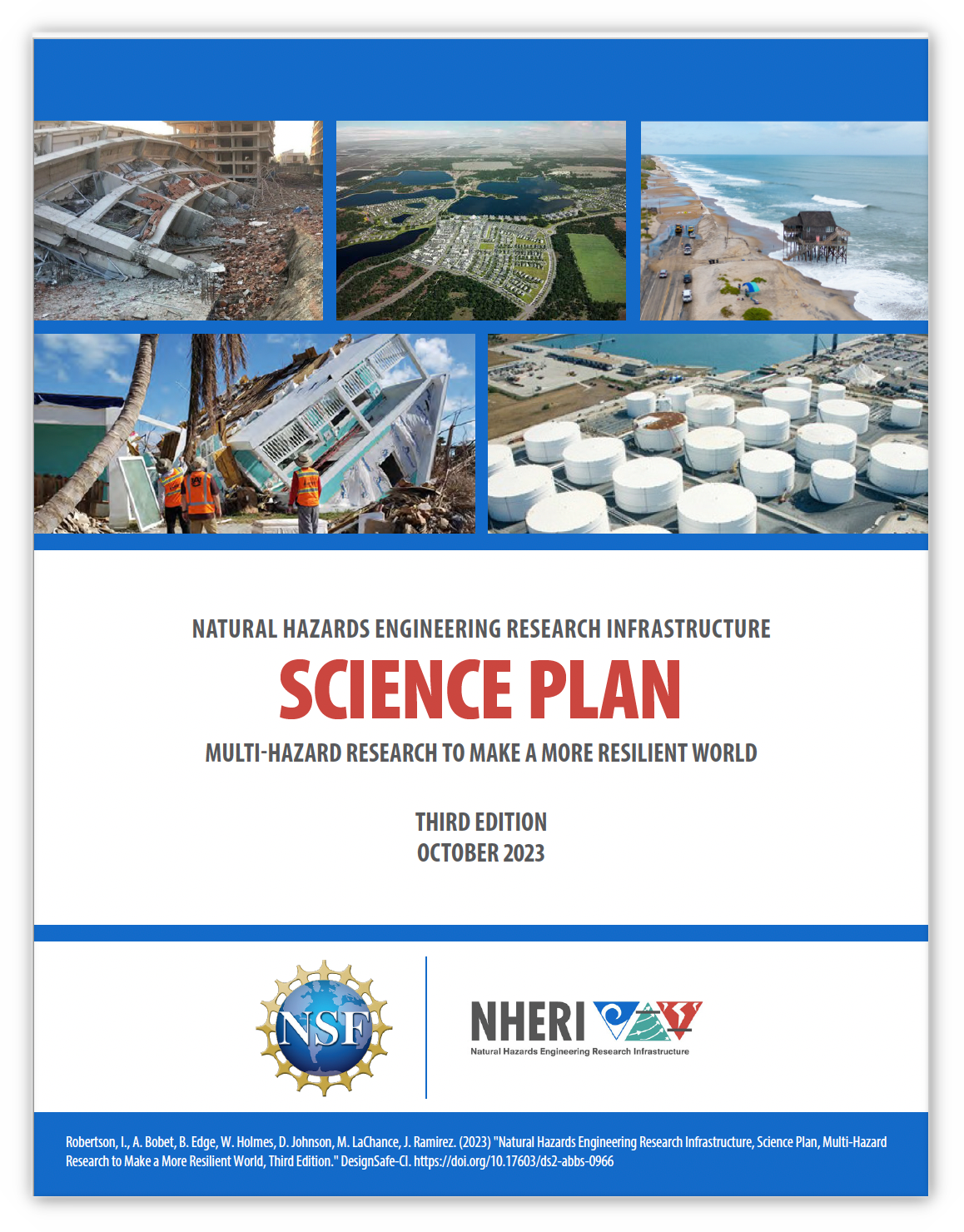FOR IMMEDIATE RELEASE
NHERI Science Plan, 3rd Edition: Key Updates on SimCenter, CONVERGE
All NHERI components now fully represented in this guide to natural hazards research

West Lafayette, IN, March 18, 2024 — The NHERI Science Plan guides and informs researchers, practitioners, students, policymakers, funding agencies, and others who seek to understand the critical research needs in the field of natural hazards engineering and community resilience.
The latest edition provides enhanced experimental facility descriptions, research examples, and major updates on the SimCenter and CONVERGE facilities. With SimCenter simulation and modeling tools, researchers can tackle complex research questions on how natural hazards affect infrastructure and communities. By leveraging CONVERGE resources, investigators can integrate social science data and practices into multi-disciplinary research, while engaging with NSF-funded Extreme Event Reconnaissance and Research networks. The third edition of the NHERI Science Plan now presents the full scope of the NHERI network.
NHERI SimCenter
Since 2016, the NHERI SimCenter has been developing simulation and modeling software for the natural hazards research community. As its thousands of users know, the SimCenter team provides world-class software tools as well as technical support and a wide variety of training opportunities. SimCenter tools are freely available to the public, at no cost to the user.
Throughout the latest edition of the NHERI Science Plan, early-career users will find thought-provoking ideas that leverage SimCenter simulation and modeling tools in natural hazards engineering research. For instance, Key Research Question #5 prompts investigations into the barriers and opportunities shaping development of analytic- and simulation-based techniques for understanding how natural hazards affect infrastructure and communities.
Read details about SIMCENTER in the Science Plan, Third Edition.
NHERI CONVERGE
Since 2018, NHERI CONVERGE has been training researchers to integrate social science data and best practices into natural hazards engineering and multi-disciplinary research. In parallel, CONVERGE also serves as the hub for eight NSF-funded Extreme Event Reconnaissance and Research (EER) networks. Readers will find a whole section of the Science Plan (Appendix D) with descriptions of the EERs.
With the inclusion of CONVERGE, the latest NHERI Science Plan offers new perspectives — from interdisciplinary science and engineering to social science aspects of hazard mitigation and management. In addition, readers will find an enhanced focus on interdisciplinarity, equity, and inclusion.
By delving into the Science Plan’s Six Key Research Questions, early-career academics across social sciences and natural hazards will discover dozens of rich research paths that address Grand Challenges, potentially transforming communities for the better. For instance, Key Research Question #1 asks how the scientific community can more effectively collect and share data and information to enable and foster ethical, collaborative, and transformative research and outcomes.
Read details about CONVERGE in the NHERI Science Plan, Third Edition.
Register for the March 21 CONVERGE webinar, “Social Science Research and the NHERI Science Plan,” with Ian Robertson, Science Plan lead editor.
Other key updates. The third edition of the Science Plan also addresses effects of climate change; encourages greater engagement with practitioners in proposal development, research, and technology transfer; and provides examples and guidance for early-career engineers and scientists planning their research agenda.
The NHERI Science Plan, Third Edition, is available in the NHERI DesignSafe Data Depot.
About the Natural Hazards Engineering Research Infrastructure
Funded by the National Science Foundation, the Natural Hazards Engineering Research Infrastructure – NHERI – is a network of experimental facilities dedicated to reducing damage and loss-of-life due to natural hazards such as earthquakes, landslides, wildfires, windstorms, and tsunamis and storm surge. NHERI provides the natural hazards engineering and social science communities with the state-of-the-art resources needed to meet the research challenges of the 21st century.





